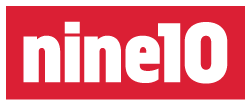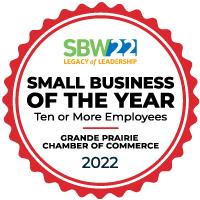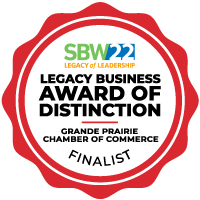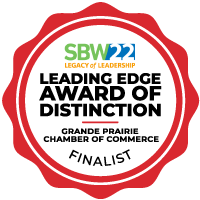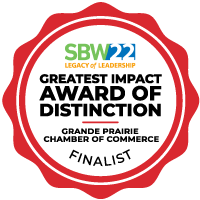I’ve been a graphic designer for over 10 years – and I’ve worked with clients in professional settings for over five years. During that time, I’ve noticed that clients typically don’t consider a lot of the finite details that go into a project.
This isn’t a mistake on their part, either. Generally speaking, most clients go into projects without really knowing what to expect. They know general project details, and they have an idea of what the final deliverable will look like. But, more often than not, they haven’t thought about the smaller details that factor into the overall finished product.
You’re not doing anything wrong if you haven’t thought about these details. You’ve hired professionals for their expertise and want them to guide you through the process. It’s very rare that a client comes into the start of a project knowing every detail of the project and exactly what they want out of it.
However, coming prepared with some of these details is very helpful to us and can speed up the entire process. So, here are our top eight tips on how to prepare for a kickoff meeting.
1. An Overview of Your Company

Think of it as a quick elevator pitch for your company. In order for us to get started on your project, we need to get to know your company. This includes what services you offer, which industries you serve, the history of your company, and more. The more details we have about your business and the work you do, the better we can represent your company in marketing or on the web.
Tell us what problems you solve for your customers or what sets you apart from your competitors. All of this basic information has an impact on what we will create for you. Basically, any information about your company you can bring to the table at the start is beneficial.
2. What’s Your Company’s Personality?

All businesses have a personality. It’s important to think specifically about what you want your company’s personality to be. Do you want to be seen as bold and innovative? Professional and corporate? Feminine and fun?
One way to do this is to step into your ideal customer’s perspective and consider what impression you want your company to make on them. How do you want them to interpret your company?
You only have one chance to make a first impression. You’ll want to ensure any designs or marketing properly reflect the personality of your company and give the right impression to potential clients.
This question has no wrong or right answers. The personality of your company is entirely up to you and should reflect the overall culture of your company.
3. Collect Existing Collateral
You’re not always starting from scratch when working with us, sometimes you have existing parts of your brand/website/marketing that you want us to work with. Collecting all of this collateral ahead of time and having it ready for us to look at is one of the most helpful preparations you can complete.
Your existing collateral will influence how we move forward. We can see if the current materials are correctly communicating your brand’s personality or not.
Knowing what you like and don’t like about existing collateral also gives us a better idea of your impression of the designs and the way they’re communicating with you and your clientele.
4. Likes & Dislikes
Taking a look around at other companies and picking out what you like or don’t like about their website or brand is a great idea. We’re never looking to directly copy any other businesses, but it helps us to determine what you find aesthetically pleasing. For example, knowing you like the way content is laid out on another site on the web, gives us an idea of what you’re hoping to see in your own site.
Telling us what you don’t like is as important as letting us know what you do like. When we know you absolutely hate something, we can easily avoid it potentially eliminating the need for revisions in the future. Your likes and dislikes help us understand how you interpret design or writing materials.
5. Who Is Your Competition
We want to know who you’re competing with for two main reasons. The first is so we can make sure you’re standing out next to them. This is especially important in branding and web design projects.
We also never want to create a design that looks similar to anyone else in your industry and risk customers confusing them for you. Knowing your competitors allows us to audit their websites or branding materials and ensure your final product is entirely unique.
6. Who Is Your Ideal Customer

The purpose of ads, websites, logos, etc. is to communicate your company’s values and personality with potential customers. It’s important to consider who your company is trying to communicate with.
One way to do this is to ask questions. This includes considering who would be the best possible customer to approach your company for services, how old your target market is, or where they live.
Things like age and location will impact how we craft any language within your project or even the colours we use. Different demographics of people are looking for different things within a company. Ensuring that your marketing materials are targeting your ideal customer will lead to greater success.
7. Have Your Contact Info Ready

Having all the contact info for your company compiled at the start of a kickoff meeting is one of the easiest and most helpful ways to streamline our process. It also prevents us from using incorrect information later on. And, having this information on hand is a really great habit to get into.
Mainly, we need to know how your customers can get in touch with you. This includes things like your phone number(s), email, and address. It’s also helpful to have a list of social media sites you’re active on. Displaying links to social media on your website has become a standard and customers expect to find links to your profiles on your website.
The best time to receive this information is before or during the kickoff meeting itself; however, sending it to us afterwards is perfectly fine as well.
Pro Tip: Write it all down in one document and have someone else in your company look it over. It’s easy to mix up letters or numbers when it comes to phone numbers, emails, addresses, and social media handles. Having everything written down ensures we don’t make a typo and end up having the incorrect contact information on your website.
8. Know the Details of Your Domain

Conversations about domains with clients go one of two ways, and these directions depend entirely on whether you already own a domain or whether you’re purchasing one for the first time.
Before we dive into that, let’s discuss what a domain is: your domain name is the address of your website that users type into the address bar of their browser. This is your website’s online address, much like your home has a mailing address. Your domain is one of the most important parts of your website project.
If you already have an existing website…
Then you already have a domain. Assuming you want to keep the domain the same, we’ll need to know where the domain was purchased.
The reason we need to know this is that we will have to gain access to wherever your domain is hosted in order to point the domain to your new website. If we don’t have access to your domain by the time your site is complete, we won’t be able to get the website online.
Pro Tip: It’s best to compile any information related to where your domain was purchased ahead of the kickoff meeting so we’re not chasing you down for these details once your site is in production. For example, if you bought your domain through GoDaddy, we would need the login information for your account.
If you don’t have an existing website…
Then, it is a good idea to consider what you would like your domain name to be. We don’t need you to look into the specifics of setting up the domain name, but it’s good to know what domain you’re hoping to purchase for your website.
Domains vary widely in price depending on how in-demand they are. Coming into the kickoff meeting with an idea for your domain allows us to determine whether the domain is available and how much it will cost.
It’s also a good idea to search the web and see if anyone has a similar domain to the one you’re hoping to purchase. If there is a really similar domain already claimed, it’s best to come up with something different to avoid users accidentally ending up on the wrong website.
Last Step?
Attend your kickoff meeting! Coming into the meeting with these eight things in mind (or in hand) will help make sure our first meeting for your project is a successful one. Of course, if you’re unsure about any of these items, let us know and we’ll be happy to help set you on the right path.
